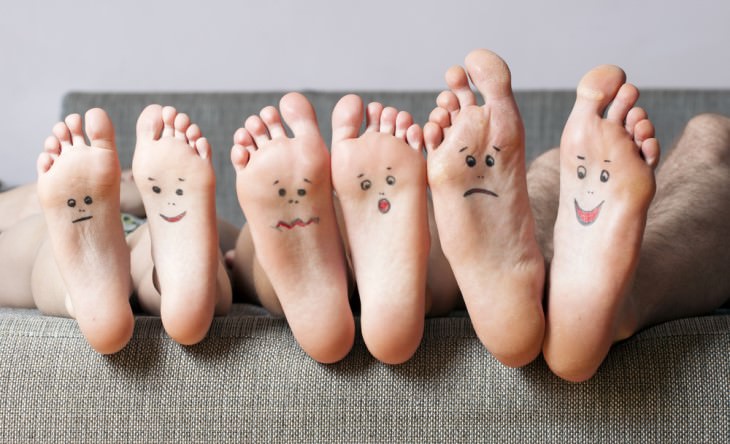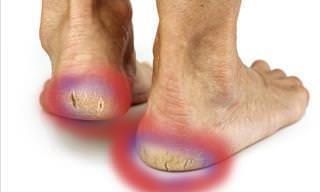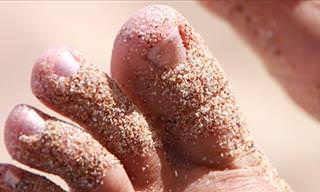Although “my feet are killing me!” is one of the most overused exaggerations in the entire world, the truth is that the condition of your feet can say a lot about the overall state of your health, as well as indicate any underlying issues you may have.
Reflexologists and massage therapists have been proponents of manipulating points on the feet to improve the health of internal organs for a very long time. Although the evidence to prove this is somewhat scant, it's true that a person’s state of health can be expressed through their feet.
In addition to containing a quarter of the entire human body’s bones, the feet also bear its entire weight. There are no less than 33 joints, 100 tendons, muscles and ligaments in them, as well as countless nerves and blood vessels that link to the heart, spine and brain.
Taking the above into account, it perhaps isn’t a surprise to know that if there is something wrong with someone’s feet, the likelihood is that their entire body will be affected as well.
Let’s take a look at 10 things about the human body that can be revealed by the condition of the feet:
1. Foot Cramping and Spasms
If you happen to get cramps and spasms in your foot, it could be a sign of a deficiency in your body. Spasms can be caused by dehydration, which occurs as a result of the muscles not getting enough oxygen. Another reason for muscles spasms could be that there is a lack or imbalance of electrolytes or nutrients in your body.
If you experience spasms specifically when walking, then this could indicate a circulatory problem.
A further reason for spasms to occur is overexertion, or failing to stretch adequately prior to exercising. Last but not least, the type of shoe you’re wearing may be causing you discomfort. If you’re a lady who happens to enjoy wearing sky-high heels, for instance, you should look more closely at your choice of footwear to see if they’re to blame for the spasms.
2. An Enlarged Big Toe
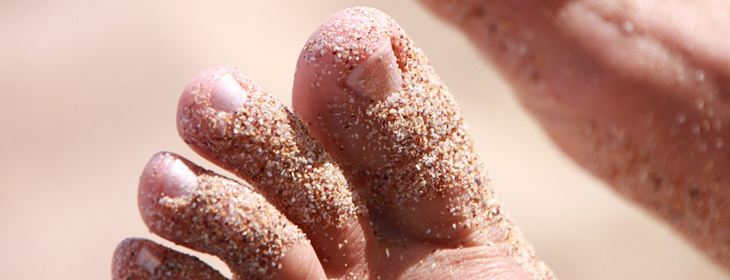
Gout is the most common type of inflammatory arthritis in men, and it can cause the big toe to become red, hot, swollen and extremely painful. Gout occurs as a result of too much uric acid building up in bodily tissues and fluids. It’s also to blame for an increased risk of developing kidney stones.
This type of inflammatory arthritis usually manifests itself in the big toe because uric acid crystals tend to collect in the coolest part of the body. Overweight or obese people are more at risk of developing gout, as well as those who drink excessive amounts of alcohol and/or consume lots of meat. Furthermore, certain medication can exacerbate the risk.
3. Cold Feet, Warm Heart?
Do your feet to tend to be abnormally cold? If they do, it could indicate that you have poor circulation, diabetes, hypothyroidisim or anemia.
In addition, if your feet change color from red, to white, to blue, it could be a sign of Raynaud’s disease, which is a narrowing of the blood vessels when nerves overreact to the cold.
Primary Raynaud’s sufferers are advised to avoid the cold and smoking tobacco, however 20% of all cases stem from an underlying disease.
4. Swollen Feet
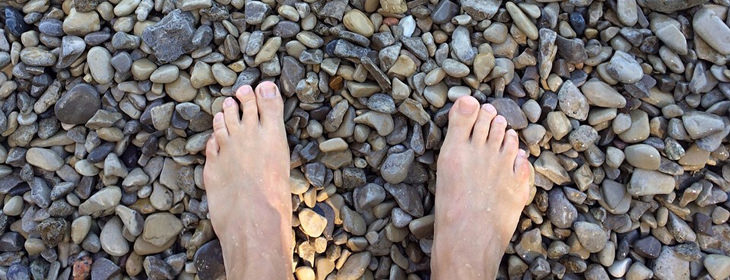
Swollen feet can be indicative of numerous health problems, and if you happen to have this symptom you should most definitely get it checked by a doctor – it could be life-threatening.
Poor circulation and related heart failure, kidney or liver disease could all be behind swollen feet, as could deep vein thrombosis, a blood clot, lymphatic build-up and cellulitis, among others.
Try raising your feet when sitting down, exercising your legs, reducing your salt intake and avoiding tight clothes, if you happen to have swollen feet.
5. Spoon-Shaped Toenails
Concave-shaped toenails aren’t just unsightly – they could also be a sign of something underlying. The primary thing it’s associated with is nutritional deficiencies. They’re also associated with genetic disorders, circulatory problems, autoimmune diseases and musculoskeletal conditions.
6. Colored Toenails
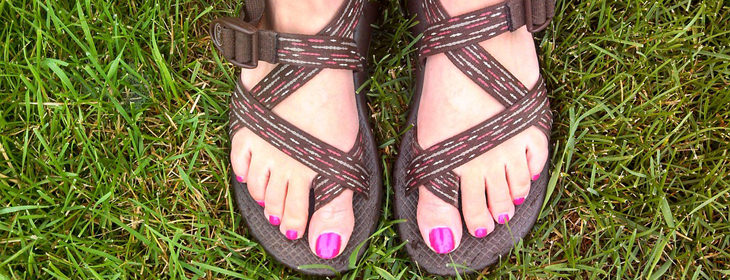
Conditions such as tuberculosis, jaundice due to liver problems, thyroid gland information and even sinusitis could all cause the toenails to yellow.
Yellowed toenails can also be symptomatic of bronchiectasis, a lung condition that causes breathing problems.
Different nail colors and textures could also indicate a whole range of various systemic problems. If you have toenail discoloration or deformities, you should seek medical advice immediately.
7. Pins and Needles
Circulatory problems, peripheral nervous system damage, a trapped nerve and a range of other ailments can lead to numbness or tingling in the feet.
Diabetics who are exposed high blood glucose for an extended period can also experience nerve damage, which in turn leads to tingling in the feet. Pins and needles in the body’s extremities can also be one of the first symptoms of multiple sclerosis.
8. Aching Toe Joints
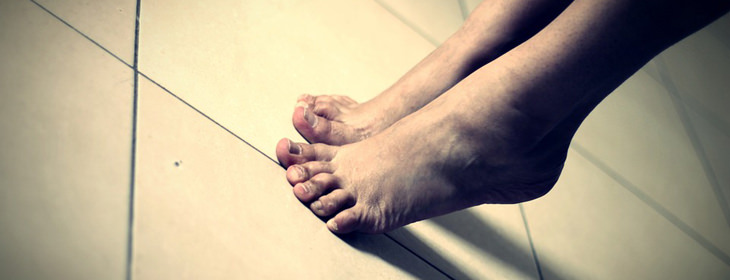
Some 90% of people who have rheumatoid arthritis will experience aching toe joints. The disease makes the lining of the joints swollen and inflamed. As a result, the joints and supporting ligaments and tissues are damaged, which ultimately leads to decreased mobility.
Numerous anti-inflammatory foods can be consumed to help relieve these symptoms, and also provide pain relief. Furthermore, shoe inserts can help minimize pressure and correct the shape of the foot. Some people also have braces that they wear on their feet.
9. Foot Drop
If you have difficulty lifting the front part of your foot, this could be a sign that you have drop foot, which is normally indicative of an underlying muscular, neurological or anatomical problem.
Nerve or muscle damage as far up as the neck or shoulder could be causing the problem, causing your foot to drag when walking.
Foot drop can occur as a result of a leg injury, or damage during a hip operation. It can also be the result of a neurological disease such as polio, as well as a brain or spinal cord disorder.
A brace or splint can be used to help maintain a normal foot position, whereas nerve stimulation can also alleviate drop foot to a certain extent. Surgery can also be undertaken to treat nerves, fuse bones or correct the position of tendons.
10. Persistent Sores
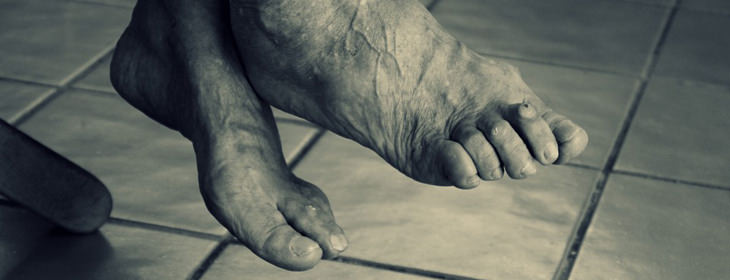
If you have diabetes, it’s possible that you have experience nerve damage to some extent. Nerve damage, or neuropathy, results in people being unable to feel or notice injuries such as blisters.
A foot injury that hasn’t been seen to appropriately can lead to ulcers and gangrene, which, in a worst-case scenario, could lead to a food being amputated. Nerve damage can also cause feet and toes to change shape.
Dry, cracked and peeling skin on the feet can also be a sign of diabetes, as can calluses and poor circulation.
Conclusion
If you have a seemingly minor problem with your feet, it might warrant more attention than you first imagined. Keep all of the above in mind and seek medical advice should you feel the need to.
Content Source: Juicing For Health
Related Articles:
Do You Suffer from Knee Pain? Try These 7 Exercises
8 Ways to Stop Squeaking Shoes
6 Great Tips to Get Rid of Foot Odor
Pamper Yourself With These 5 Luxurious DIY Foot Soaks
 Go to BabaMail
Go to BabaMail


